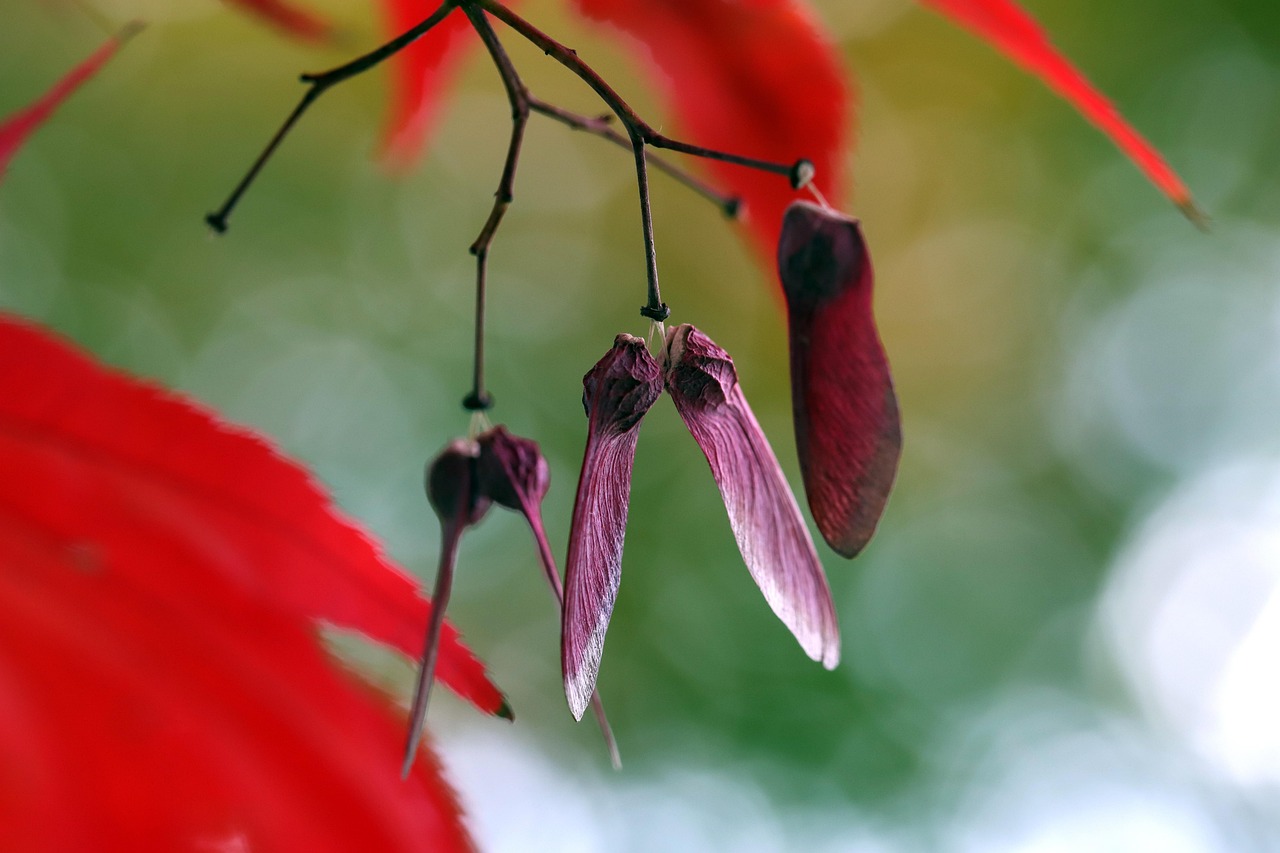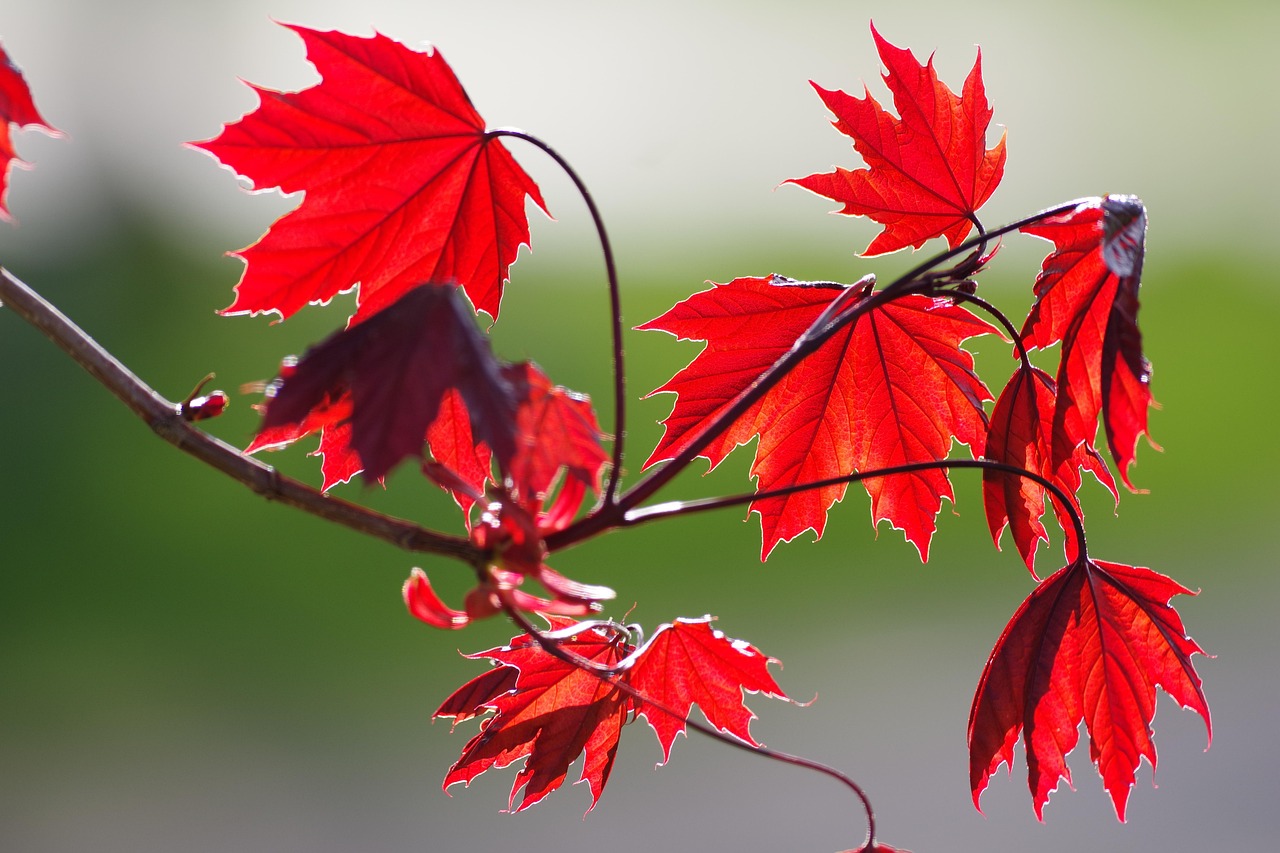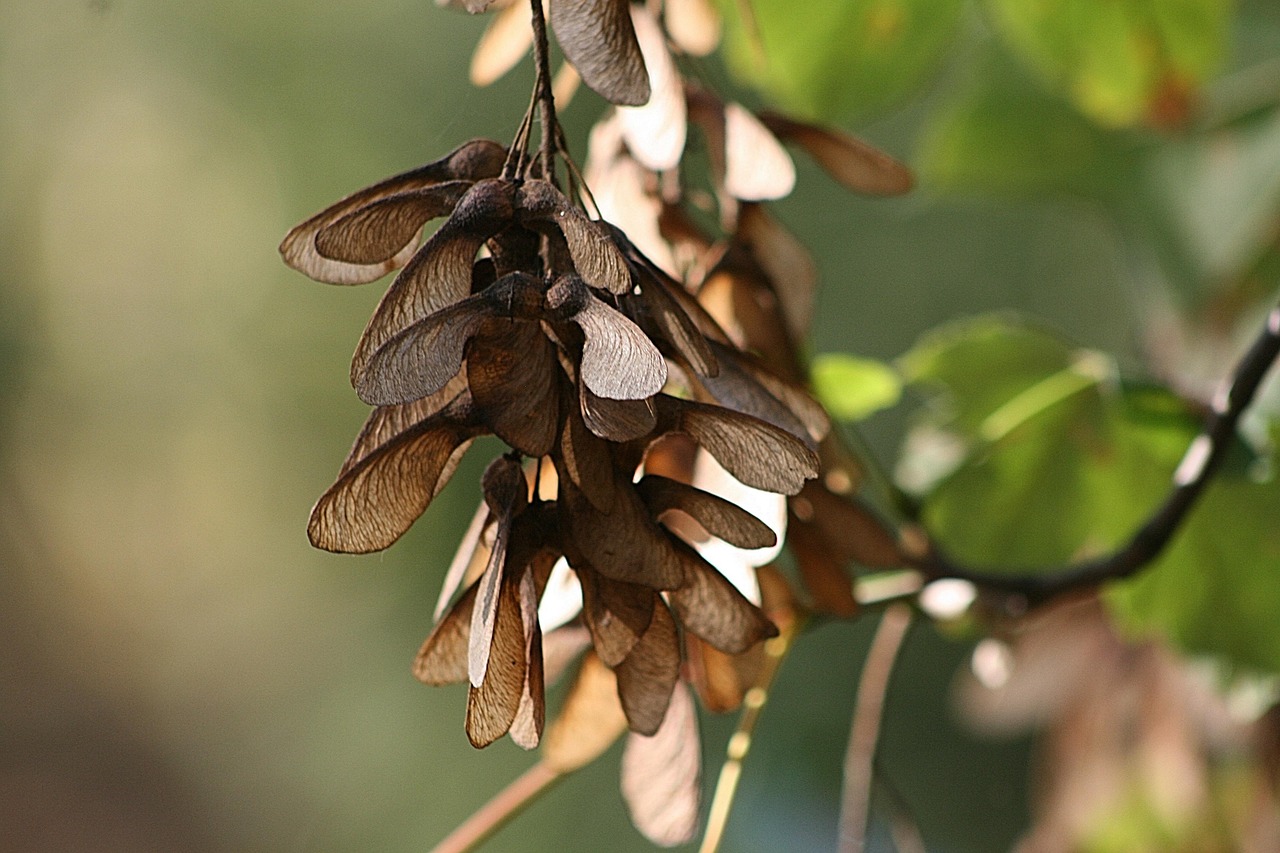Maple seeds are primarily dispersed by wind. The unique structure of their wings allows them to spin and glide, which helps them travel away from the parent tree, promoting genetic diversity and reducing competition for resources.
Maple trees, belonging to the genus Acer, are known for their beautiful foliage and syrup production. However, their seed dispersal mechanism is equally fascinating. The seeds of maple trees are typically referred to as “samaras.” These samaras have a distinctive wing-like structure that aids in their dispersal. Understanding how these seeds spread is crucial for appreciating the ecological role of maple trees and the health of forest ecosystems.
Dispersal mechanisms are vital for plant species. They ensure that seeds can find suitable environments for germination and growth. Maple seeds utilize both physical characteristics and environmental factors for effective dispersal. By examining these mechanisms, we can gain insights into forest dynamics and plant propagation.
Seed Characteristics of Maple Trees

The structure of maple seeds is specifically adapted for wind dispersal. Each samara consists of a seed encased in a protective covering and has a wing-like extension. This design allows the seed to be carried by gusts of wind over considerable distances.
- Wing Shape: The wing of a samara is typically elongated and flat, resembling a helicopter blade. This shape enables the seeds to spin as they fall, increasing their air resistance and extending their flight time.
- Lightweight Structure: Maple seeds are light, allowing them to be easily lifted by the wind. This lightweight nature is crucial for effective aerial dispersal.
- Seed Size: The size of maple seeds varies by species. Smaller seeds can be carried further away, while larger seeds may settle closer to the parent tree.
Different species of maple trees produce various types of samaras. For example, the Acer saccharum, or sugar maple, has a distinctive samara that is slightly different from that of the red maple, Acer rubrum. These variations help adapt to different environmental conditions and dispersal needs.
The Dispersal Process
The dispersal process begins when the seeds mature in late spring or early summer. As the samaras dry out, they become lighter and are more susceptible to wind currents. When a breeze blows through, the seeds are released from the tree and begin their journey.
During this process, several factors influence how far and in which direction the seeds will travel:
- Wind Speed: Strong winds can carry seeds farther away from the parent tree, while gentle breezes may only allow them to drift a short distance.
- Topography: The landscape plays a significant role; hills, valleys, and obstacles can affect wind patterns and, consequently, seed dispersal distances.
- Humidity and Temperature: These environmental factors can influence seed release timing and dispersal effectiveness.
The flight pattern of the samaras is crucial for successful dispersal. As the seeds spin and glide through the air, they can travel several hundred feet from the parent tree. This distance helps reduce competition with other plants for sunlight, water, and nutrients.
Ecological Importance of Seed Dispersal
The dispersal of maple seeds is not just an interesting biological process; it has significant ecological implications. Seeds that land in favorable conditions are more likely to germinate and grow into new trees, contributing to forest regeneration.
Maple trees provide essential habitats for various wildlife species. As these trees reproduce and expand their range through seed dispersal, they support biodiversity within forest ecosystems. Furthermore, areas populated by maples can help regulate temperature and humidity levels in their environment.
| Maple Species | Seed Characteristics | Dispersal Distance |
|---|---|---|
| Sugar Maple (Acer saccharum) | Broad-winged samaras | Up to 300 feet |
| Red Maple (Acer rubrum) | Narrow-winged samaras | Up to 200 feet |
| Norway Maple (Acer platanoides) | Winged samaras with varied shapes | Up to 150 feet |
In summary, the dispersal of maple seeds through wind is a remarkable adaptation that facilitates their survival and contributes to forest health. Understanding this process helps us appreciate the interconnectedness of plant species and their environments.
Factors Influencing Seed Dispersal
Several factors influence the efficiency and effectiveness of seed dispersal in maple trees. Understanding these factors provides insight into how different environmental conditions and tree characteristics interact to affect seed spread.
Environmental Conditions
The environment plays a crucial role in seed dispersal. Key environmental factors include:
- Wind Patterns: The direction and strength of the wind can significantly affect how far and in which direction maple seeds travel. Strong, consistent winds can carry seeds further, while calm conditions may result in seeds falling closer to the parent tree.
- Temperature and Humidity: Weather conditions, such as temperature and humidity, can influence when seeds are released from the tree. Warmer temperatures may lead to earlier seed release, while high humidity can affect the weight and buoyancy of the seeds.
- Seasonal Changes: The timing of seed release is often synchronized with seasonal changes. Maple trees typically release their seeds in late spring or early summer when conditions are favorable for germination.
Site Characteristics
The characteristics of the sites where seeds land also impact their potential for growth. Important site characteristics include:
- Soil Quality: Nutrient-rich soils increase the chances of seed germination and survival. Seeds that land in poor soil may struggle to establish themselves.
- Moisture Availability: Adequate moisture is essential for seed germination. Areas with consistent rainfall or close proximity to water sources provide better opportunities for seeds to thrive.
- Vegetation Density: The density of existing vegetation can affect light availability and competition for resources. Seeds that land in open areas may have a better chance of survival than those that fall into densely vegetated spots.
Adaptations for Successful Dispersal
Maple trees have developed various adaptations that enhance the effectiveness of their seed dispersal mechanisms. These adaptations help ensure that their offspring can establish themselves successfully.
Seed Morphology
The physical structure of maple seeds is specifically designed for wind dispersal. Key morphological features include:
- Aerodynamic Shape: The wing-like extensions of samaras allow them to catch the wind effectively, creating lift as they spin through the air. This design maximizes their flight distance.
- Lightweight Composition: The low mass of maple seeds enables them to be easily lifted by wind currents, allowing them to travel long distances away from the parent tree.
- Variable Wing Angles: The angle at which the wings are positioned influences how the seeds fall. Some species exhibit variations in wing shape or angle, which can affect their dispersal patterns.
Timing of Seed Release
The timing of seed release is another critical adaptation for successful dispersal. Factors that influence this timing include:
- Flowering Time: Maple trees typically flower before leaf emergence, allowing seeds to be produced and released when there is less competition for light and resources.
- Synchronization with Weather Patterns: Releasing seeds during optimal weather conditions increases the likelihood of successful dispersal and germination. For example, releasing seeds just before rain can improve soil moisture levels for germination.
- Predator Avoidance: Timing seed release to avoid peak activity periods for seed predators, such as squirrels or birds, can enhance survival rates for newly dispersed seeds.
Role of Animal Interactions

While wind is the primary means of dispersing maple seeds, animal interactions also play a significant role in the dispersal process. Various animals contribute to this process in different ways.
Seed Predators and Dispersers
Some animals consume maple seeds, while others inadvertently aid in their dispersal:

- Squirrels: Squirrels often gather maple seeds as food. While they may eat some seeds, they also bury surplus seeds in various locations, which can lead to new plant growth if forgotten.
- Birds: Certain bird species also feed on maple seeds. As they transport and consume these seeds, they may inadvertently drop them in new locations, aiding in dispersal.
- Insects: Various insects interact with maple trees and their seeds. Some may help pollinate flowers, while others may facilitate seed dispersal through their movement across different habitats.
The interactions between maple trees and animals create a complex ecological network that enhances seed dispersal efficiency and promotes forest biodiversity. By understanding these relationships, we can appreciate the multifaceted nature of seed dispersal mechanisms in maple trees.
Human Influence on Maple Seed Dispersal
Humans significantly impact the natural processes of seed dispersal in maple trees. Through various activities, humans can enhance or hinder the dispersal mechanisms that these trees rely on for successful reproduction and growth.
Urbanization and Habitat Fragmentation
As urban areas expand, natural habitats are often disrupted. Urbanization leads to habitat fragmentation, which can influence how seeds are dispersed:
- Reduced Wind Flow: Buildings and other structures can block or alter wind patterns, potentially limiting the distance that maple seeds can travel. This can result in seeds landing closer to the parent tree than they would in a more open environment.
- Increased Competition: Fragmented habitats often increase competition among plants for resources. As maple seeds land in these areas, they may face greater challenges in establishing themselves due to competing vegetation.
- Limited Animal Interactions: Urban environments may reduce the presence of animals that aid in seed dispersal. For example, fewer squirrels or birds may lead to fewer opportunities for seeds to be transported away from the parent tree.
Forestry Practices
Forestry practices also play a vital role in influencing the dispersal of maple seeds. Various management techniques can affect forest dynamics:
- Selective Logging: When certain trees are removed, it can change the structure of the forest. This alteration may impact the growth conditions for maple seeds and influence how effectively they disperse.
- Reforestation Efforts: Planting maple trees in new areas can help promote their spread. These efforts can create favorable conditions for seed germination and establish new populations.
- Controlled Burns: In some cases, controlled burns are used to manage forest health. This practice can remove competition and create open areas where maple seeds have a better chance of thriving.
The Role of Climate Change
Climate change is an ongoing challenge that affects plant species worldwide, including maple trees. Its impact on seed dispersal is multifaceted and significant.
Changing Weather Patterns
Variations in temperature and precipitation can alter the timing of seed release and germination:
- Altered Growing Seasons: Changes in climate may extend or shorten growing seasons, thus affecting when maple trees flower and produce seeds. This shift can lead to mismatches between seed release and optimal growing conditions.
- Increased Intensity of Storms: More severe storms can disrupt seed dispersal by damaging trees or causing seeds to be released prematurely. Heavy rainfall may wash away seeds or create unsuitable landing spots.
- Drought Conditions: Prolonged drought can hinder seed germination rates, making it difficult for new plants to establish themselves in affected areas.
Shifts in Ecosystems
As climate change progresses, entire ecosystems are shifting, which influences how maple seeds disperse:
- Changes in Animal Behavior: Altered habitats may affect animal migration patterns, leading to fewer interactions with maple seeds. Animals that help disperse seeds may not reach newly established habitats.
- Invasive Species: Climate change can lead to the proliferation of invasive plant species that compete with native maples. This competition can impact how successfully maple seeds establish themselves in new environments.
- New Growth Regions: As temperatures rise, suitable habitats for maple trees may shift northward or to higher elevations. This migration affects where seeds must be dispersed to ensure future survival.
Research and Conservation Efforts

Understanding maple seed dispersal mechanisms is crucial for conservation efforts. Researchers study these processes to develop strategies that support healthy ecosystems.
Ecological Studies
Numerous studies focus on the dynamics of seed dispersal in maple trees:
- Field Experiments: Researchers conduct field studies to observe how different environmental factors affect seed dispersal distances and germination rates. This research helps identify optimal conditions for seed establishment.
- Genetic Studies: Investigating the genetic diversity of maple populations can provide insight into how well they adapt to changing environments. High genetic diversity often correlates with better adaptability to environmental shifts.
- Modeling Dispersal Patterns: Scientists use modeling techniques to predict how climate change and human activities may influence future dispersal patterns. These models can inform conservation planning and management decisions.
Conservation Initiatives
Conservation initiatives aim to promote healthy populations of maple trees and ensure their continued survival:
- Protected Areas: Establishing protected areas helps maintain suitable habitats for maple trees and their associated wildlife. These areas provide safe environments for seed dispersal and growth.
- Public Awareness Campaigns: Educating communities about the importance of maple trees fosters support for conservation efforts. Increased awareness can lead to more people participating in reforestation or habitat restoration projects.
- Sustainable Forestry Practices: Promoting sustainable forestry helps balance human needs with ecological health. Practices that support natural regeneration contribute positively to the dispersal of maple seeds.
The continuing research and conservation efforts surrounding maple seed dispersal are vital for ensuring that these trees remain a resilient part of our forests amidst changing environmental conditions.
Future Perspectives on Maple Seed Dispersal
As we move forward, it is essential to recognize the ongoing challenges and opportunities that lie ahead for maple seed dispersal. Continued research and adaptive management strategies will be crucial in addressing the changing environmental conditions that affect these trees.
Innovative Research Approaches
Research on maple seed dispersal is evolving, with new methodologies providing deeper insights into ecological dynamics:
- Remote Sensing Technology: Advances in remote sensing can help researchers monitor forest health and seed dispersal patterns over large areas. This technology allows for real-time data collection regarding environmental conditions and their impact on maple trees.
- Genomic Studies: Exploring the genetic makeup of maple trees can reveal how they adapt to various environmental stresses. Genomic research may lead to the identification of traits that enhance resilience against climate change.
- Ecological Modeling: Improved ecological models can predict how changes in climate and land use will affect maple seed dispersal. These models can inform conservation strategies and help manage risks associated with environmental changes.
Community Engagement
Engaging communities in conservation efforts is vital for the future of maple trees. Local involvement encourages stewardship and sustainable practices:
- Planting Initiatives: Community-led planting initiatives can help restore degraded areas and increase the population of maple trees. These projects foster a connection between people and nature, emphasizing the importance of local ecosystems.
- Educational Programs: Schools and community organizations can implement educational programs focused on the ecological role of maple trees. Awareness campaigns can inspire individuals to take action in preserving their natural surroundings.
- Citizen Science Projects: Involving citizens in scientific research allows for broader data collection regarding seed dispersal and tree health. Citizen science initiatives can empower communities by contributing to vital ecological knowledge.
Final Thoughts
The dispersal of maple seeds is a complex process shaped by various factors, including environmental conditions, animal interactions, and human influences. Understanding these mechanisms is essential for appreciating the ecological roles that maple trees play in their environments.
The unique adaptations of maple seeds, such as their aerodynamic shapes and synchronized release times, demonstrate the remarkable evolution of these trees. However, as climate change and habitat alterations continue to pose challenges, proactive measures are necessary to ensure the survival of maple species.
Conservation efforts, informed by ongoing research and community involvement, highlight the importance of maintaining healthy forests for future generations. By fostering an appreciation for maple trees and their ecosystems, we can work together to protect these vital resources and enhance biodiversity across landscapes.
In conclusion, as we strive to understand and support the dispersal mechanisms of maple seeds, we embrace our role as stewards of nature. The future of these trees relies on a collective effort to preserve their habitats and promote sustainable practices that benefit both ecosystems and communities alike.
